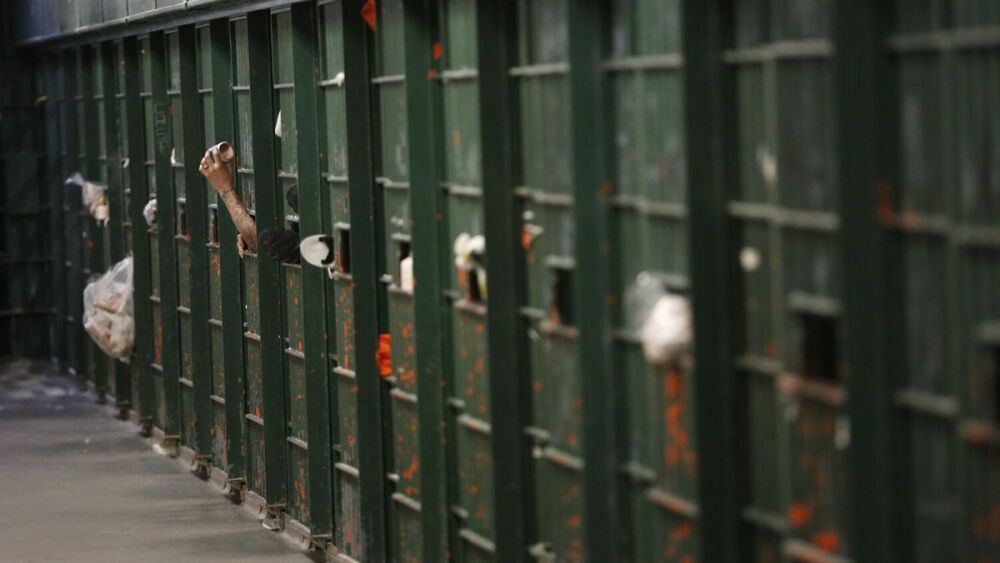By Alene Tchekmedyian
Los Angeles Times
LOS ANGELES — About two years ago, the Los Angeles County Board of Supervisors voted to develop a plan to close the decrepit Men’s Central Jail as it sought to find alternatives to incarceration for the thousands of people who filter in and out of the county’s sprawling jail system.
Officials followed up in March of last year with a report outlining how to close the jail within two years, which included plans to reduce the jail population and set aside money to ramp up community-based mental health and substance abuse treatment programs.
Since then, though, little has been done to follow through.
The slow pace has led to protests from activists and others advocating for people who are incarcerated, and underscores the challenges that would come with such a massive undertaking.
“What seems to have happened is basically there’s been a desire to take a political stand but without kind of thinking through and committing the resources to actually address the underlying issues,” said Barry Litt, a civil rights attorney who has helped win massive settlements over conditions in the lockups in L.A. County and elsewhere. “You get what we have here which is: We want to get rid of the county jail, but you don’t get a lot of movement to do it.”
The jail, built 59 years ago, is the largest of seven facilities in L.A. County’s sprawling and overcrowded jail system. On any given day, it’s home to more than 4,000 inmates who are held in cramped cells along narrow hallways in downtown L.A.
In a statement Wednesday, L.A. County officials said the jail is unsafe and closing it is a “top priority.”
“Work is underway to safely and systematically close MCJ by implementing viable alternatives to incarceration and expanding community-based service. ... Despite the extensive efforts underway, depopulating and closing MCJ is not a short-term undertaking,” said the statement, which was released by a county spokesperson and Supervisor Hilda Solis’ office.
Although last year’s report gave a two-year timeframe for closing the jail, the statement said, an analysis from an outside consulting group a few months later projected a longer timeline.
“While it is difficult to project an exact timeline, we know it is crucial to proceed methodically to ensure that support systems are firmly in place to ensure public safety, to avoid worsening the homelessness crisis, and to build a transformative ‘Care First, Jails Last’ system of care,” the statement said.
Supervisor Holly Mitchell said the county is not ready to close the jail, but she has been pushing to use state grants set aside to build jails to instead fund diversion programs.
“We don’t want to build jails, but we want to use it to serve the same population,” she said.
She added: “The point is how quickly can we and the community get ready to build out the services we need on the care end of our ‘Care First, Jails Last’ initiative.”
Sheriff Alex Villanueva has criticized the plan to close the jail without a replacement.
“We have homicides, we have people running amok on the streets, everyone’s got a gun, every gangster’s out there trying to shoot other gangsters and the occasional innocent victim, and those people eventually are going to make their way into jail,” he said last fall. “And there is no place to put them if you tear down Men’s Central Jail.”
Talks of shutting down the antiquated and overcrowded facility have been going on for a decade, and at one point, elected leaders came out with a serious plan for building a replacement. Those plans were scrapped in 2019 amid growing unease about whether they focused enough attention on mental health treatment.
When the pandemic started, county officials sought to leverage a reduction in the jail population driven by the risk of large-scale outbreaks of the disease in cramped quarters.
Sharon Dolovich, a UCLA law professor who heads the school’s COVID Behind Bars Data Project, said the national jail population dropped by a quarter during the pandemic.
“What it showed you was if you stop arresting people for minor crimes, if you release people doing stupid jail time on small misdemeanor offenses” and commit to releasing them as they await trial, she said, “turns out you can put a lot of downward pressure on the jail population without that much work.”
Roughly 100 activists representing a coalition of justice reform organizations gathered outside the Board of Supervisors offices Wednesday morning demanding it close the jail by March of next year. They also called on the board to fund a robust pretrial diversion program for those who can’t afford bail.
Thousands of people are locked up “because they don’t have the financial means to buy their freedom,” Dolores Canales with the Bail Project told the crowd. “Freedom should be free.”
Many in the group wore T-shirts that said “care not cages,” and “can’t get well in a cell.” They held up signs with old quotes from supervisors about the urgency of closing the facility.
“It’s been one year since the supervisors have seen the most comprehensive plan we’ve ever had to close Men’s Central Jail,” said Mark Anthony Clayton-Johnson, executive director of Dignity and Power Now, which advocates for incarcerated people and their families. “And today we still don’t have a timeline.”
©2022 Los Angeles Times.











